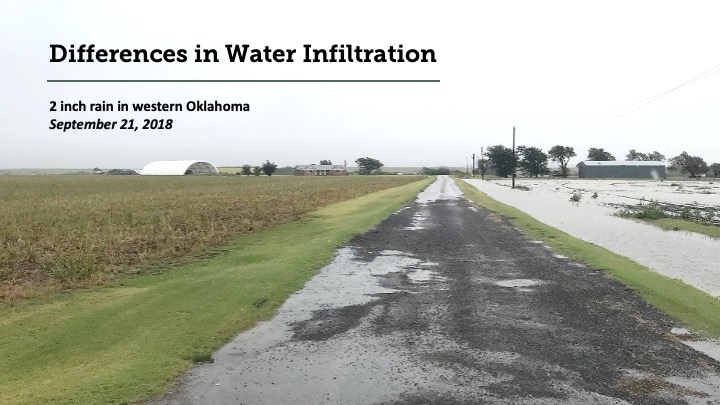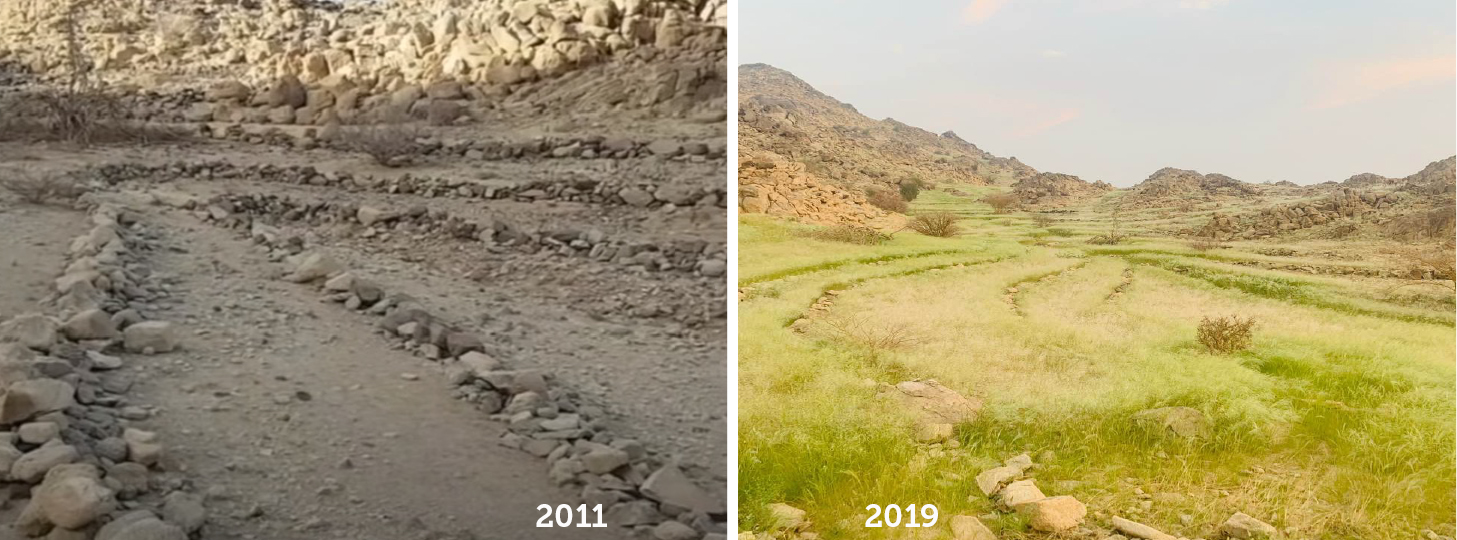
by Dale Strickler
Less than 100 years ago, the Dust Bowl wreaked havoc on our nation’s farms and ranches, with drastic and lasting impacts across the land. While this prolonged time of drought underscored just how important water is – we also learned about the critical role that agriculture management plays in capturing and using rainfall when it does come for improved climate resilience.
Capturing Rainfall
Research by Oklahoma State University Cooperative Extension Service found that, on average, only 18% of rainfall is being captured by crops and used to grow food. A staggering 59% evaporates, while 23% falls prey to run off. The year that study was conducted, Oklahoma farmers produced an average of 33 bushels of wheat on only 6.2 inches of soil moisture, after factoring in what was lost to run off and evaporation.
These figures help us understand that practices that improve water infiltration would allow farmers and ranchers to capture and use five times as much naturally falling moisture.

Of course, better utilizing rainfall would have an incredible impact on yields – but there are also important co-benefits for our environment and society.
Improved water infiltration lessens the dependence on additional irrigation, preserving fresh water sources for needed drinking water. At the same time, we see decreased run-off and erosion, keeping rivers, lakes, and other bodies of water cleaner.
As we collectively asses water risks and their role in resilience, geographically-specific interventions to improve water infiltration are critical.
A Case Study
For inspiration on designing for drought resilience, let’s look at one of the driest and hottest places: Al Baydha, Saudi Arabia. There, the average rainfall is just 2.5”, while temperatures can climb to 120°F in the summer.
In 2011, a project was launched to design terraces, turning the bare rock and dirt into a thriving pasture for grazing. Capitalizing on every drop of rain, the landscape was transformed in just a few short years.

Lessons Learned
While terraces aren’t the solution for every farm or ranch facing drought conditions, this project inspires us as to what is possible. There are hundreds of other techniques that farmers and ranchers can deploy to capture the full benefit of their natural rainfall. Some of these techniques include:
- Eliminate Soil Tillage: Tillage exposes the soil to the pounding effects of rainfall, which leads to compaction layers at the soil surface that impedes the further downward movement of water.
- Leverage Crop Residue: Another major step is to leave as much residue on the soil surface as possible, to cushion the impact of falling raindrops and reduce erosion.
- Utilize Cover Crops: A third major action to benefit infiltration is the replacement of fallow periods with cover crops. While cover crops use more moisture during their active growth than a soil that is being fallowed, the difference is not as great as many might expect.

Especially when used together, these practices help compound rates of water infiltration over time. For example, even after termination of the cover crop, the much higher rate of infiltration from the cover crop residue will make each successive rainfall event more efficient, if the mulch is left intact and not tilled under. After they decay, cover crop roots can leave large macropores in the soil that act as easy entry points for rainwater to enter the profile.
These solutions, along with many more in a regenerative toolbelt, help farmers and ranchers maximize the benefit of natural rainfall – which lessens the environmental impacts on aquifers, rivers, lakes, and local drinking water.
Next Steps and Learn More
To learn more about the right water-wise management solutions to reach your business and land goals, Contact Us.
For Companies: Water stewardship throughout the value chain is a key part of climate resilience and action. The practices outlined in this article provide a plethora of benefits – from improved water infiltration as mentioned, to carbon sequestration and soil health, to enhanced biodiversity. Our team helps drive results toward these commitments, finding the right solutions to meet your goals.
For Farmers: Capturing and using rainfall to its maximum benefit has lasting benefit, economically and agronomically. Our landowner advisors help assess your land and goals, creating a customized plan to optimize water availability for crops and lessen downstream water impacts.
Additional Resources:
- https://www.ers.usda.gov/amber-waves/2017/june/farmers-employ-strategies-to-reduce-risk-of-drought-damages/
- https://www.climatehubs.usda.gov/hubs/midwest/topic/sare-resource-cultivating-climate-resilience-farms-and-ranches
About the Author
DALE STRICKLER
Landowner Advisor
With more than 30 years of experience in agronomy, pasture management, and soil and crop advising, Dale brings an incredible depth and breadth of knowledge to AgSpire’s work.
With a keen curiosity to find innovative solutions, combined with a thorough understanding of the realities of modern production agriculture, Dale is especially adept in developing highly effective management systems in challenging climates and soil types
He has also authored three books, including The Drought Resilient Farm, Managing Pasture, and The Complete Guide to Restoring Your Soil, which was named a top ten farming book for 2021 by Modern Farmer.